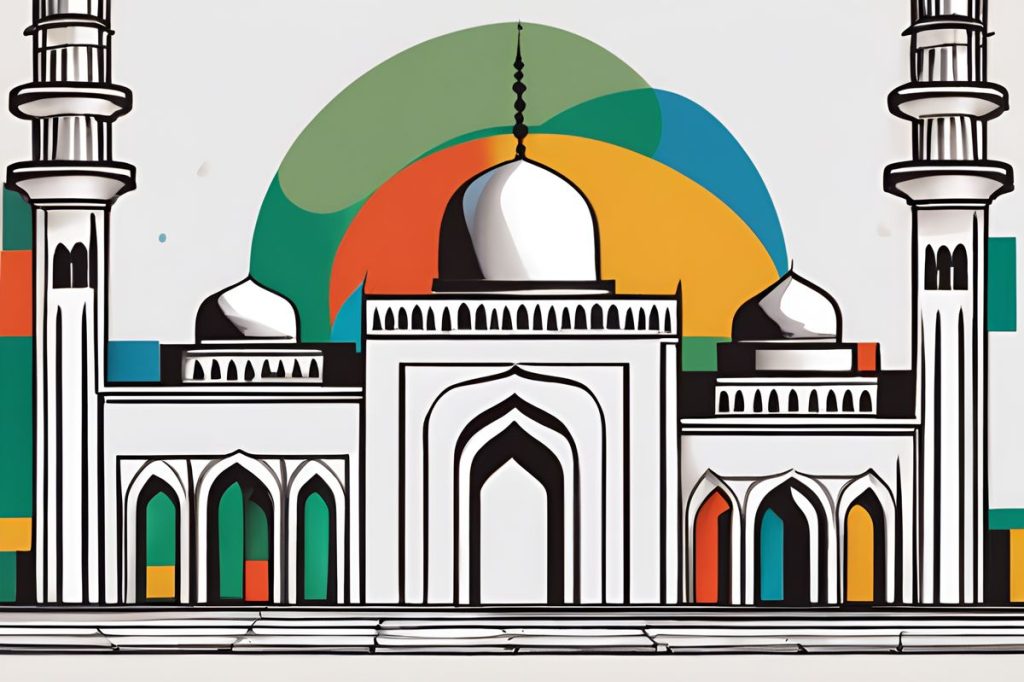During Eid al-Adha, Hala Sultan Tekkesi in Larnaca, Cyprus, will close its doors to welcome pilgrims honoring the festival. This revered site, the final resting place of Umm Haram, symbolizes unity and cultural heritage, attracting visitors from near and far.
Why is the Hala Sultan Tekke significant in Islam?
Hala Sultan Tekke is one of Islam’s most revered sites, ranking after Mecca, Medina, and Jerusalem in importance. It is the final resting place of Umm Haram, the wife of a companion of the Prophet Muhammad. The site’s spiritual, historical, and architectural significance attracts pilgrims and tourists, symbolizing interfaith respect and cultural heritage.
Pilgrimage and Closure
Come Wednesday, Larnaca’s Hala Sultan Tekkesi will not be admitting visitors. This temporary closure makes way for the influx of faithful pilgrims commemorating Eid al-Adha. Eid al-Adha, a significant festival in the Islamic lunar calendar known as Dhu al-Hijjah, began its celebration last Sunday.
During this period, the Tekke becomes a beacon for hundreds of pilgrims. It’s anticipated that the numbers this year will echo April’s figures, where around 450 individuals journeyed from the north for the occasion of Eid al-Fitr. This pilgrimage marked the first since 2019, as the previous years saw the ritual paused due to the global health crisis.
A Significant Spiritual Site
Noted as one of the most revered sites in Islam, the Hala Sultan Tekkesi stands after Mecca, Medina, and Jerusalem in importance. It serves as the final resting place of Umm Haram, affectionately known in Turkish tradition as Hala Sultan. Umm Haram was the esteemed wife of Ubada bin al-Samit, a noted companion of the Prophet Mohamed.
The significance of the site extends beyond its spiritual value, encompassing historical and architectural elements that draw both the devout and curious. Its location near the Salt Lake of Larnaca adds to the Tekke’s serene atmosphere, inviting pilgrims and tourists alike to reflect and find peace.
The Cultural and Historical Impact
While the site is primarily known for its religious significance, the Hala Sultan Tekkesi is also a cultural and historical landmark. Dating back to the Ottoman era, the Tekke stands as a testament to the rich Islamic heritage on the island. Its architecture and the surrounding gardens are examples of the intricate and thoughtful design synonymous with Ottoman building practices.
Moreover, the Hala Sultan Tekkesi has been a symbol of interfaith respect and unity. It’s not only Muslims who hold the site in high regard; people from various backgrounds come to appreciate its beauty and historical importance. This respect across different communities underscores the shared values and mutual appreciation present on the island.
Looking to the Future
The Hala Sultan Tekkesi’s role in fostering religious observance and cultural exchange is invaluable. As pilgrims prepare to gather, there’s a renewed sense of community and spirituality that permeates the air. The Tekke’s role in promoting unity and understanding continues to be a beacon of hope for a harmonious future.
In the shadow of the Tekke, both residents and visitors find a common ground, a place where history and belief intertwine. With each pilgrimage and each visitor’s footsteps, the legacy of the Hala Sultan Tekkesi is carried forward, enriching the cultural tapestry of the region.
How often is the Hala Sultan Tekke closed to visitors for pilgrimages?
The Hala Sultan Tekke in Larnaca, Cyprus, typically closes its doors to visitors during significant Islamic festivals such as Eid al-Adha. These closures allow pilgrims to honor the occasion in a sacred and uninterrupted space.
What is the historical significance of Umm Haram, whose final resting place is at the Hala Sultan Tekke?
Umm Haram, also known as Hala Sultan, was the wife of Ubada bin al-Samit, a companion of the Prophet Muhammad. Her burial site at the Hala Sultan Tekke holds immense spiritual importance in Islam, attracting pilgrims and visitors seeking to pay their respects.
How does the Hala Sultan Tekke contribute to cultural exchange and understanding?
The Hala Sultan Tekke is not only a revered religious site but also a symbol of interfaith respect and unity. Visitors from diverse backgrounds come to appreciate the Tekke’s beauty, history, and shared values, fostering mutual understanding and appreciation on the island of Cyprus.
What role does the Hala Sultan Tekke play in the future of the region?
The Hala Sultan Tekke continues to serve as a beacon of hope for a harmonious future, promoting unity, community, and spirituality. Each pilgrimage and visitor’s experience at the Tekke contributes to enriching the cultural tapestry of the region, fostering a legacy of peace and understanding.

